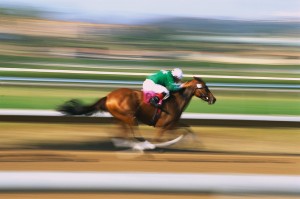Working sustainably: The magic of pausing
 When someone refers to a sustainable workplace, do you think of environmental initiatives; installing blue bins for recycling, replacing disposable water bottles with water bubblers, or retrofitting lower wattage light fixtures? If so, you are not alone.
When someone refers to a sustainable workplace, do you think of environmental initiatives; installing blue bins for recycling, replacing disposable water bottles with water bubblers, or retrofitting lower wattage light fixtures? If so, you are not alone.
On a bigger scale, perhaps you think of sustainability as it is discussed on the world stage, in terms of the three E’s – environment, equity, and economics – and looking at the needs of a growing population juxtaposed with the needs of future generations.
What about personal sustainability?
But what about your day-to-day life and the work that you do? Think about the way that you operate, how you meet goals, and how you manage others to move your organization forward. Is it sustainable?
Most textbook definitions of sustainability boil down to using something in a way so as not to deplete or “use it up.” Other definitions include the element of being able to last for a long time.
The notion of sustainability is at odds with the reality of how many leaders work. Unreasonable demands on leaders’ time, the expectation of 24/7 connectivity, and the absence of true downtime have all conspired to leave leaders – and the people who work for them – feeling as though they are overworked, overwhelmed, and chronically under pressure.
It’s not surprising that I end up talking about personal sustainability issues with many of the leaders that engage me for coaching, even when their goals for coaching start out as something entirely different. Working sustainably simply impacts everything that we try to accomplish.
The magic of pausing
Take, for example, one leader that I coached who wanted to work on leadership and interpersonal effectiveness. She would often show up for our tele-coaching sessions in a anxious state of mind, professing to be way too busy for coaching that day. Issues were raging, someone else on her team had resigned leaving her with even more work to do, and she was frantic. Yet after our coaching sessions, especially on those days, she would express relief at how much clearer the problems and their possible solutions seemed to be.
I’d like to believe that it was the power of coaching – and that may have been some of it – but, at the core, the frantic way that she applied herself was the main problem. Our sessions were the only time that she stopped, gave herself permission to breathe for an hour, and wasn’t trying to get anything done. Ironically, it was when she got the most done. The magic was in the pause.
Tackling sustainability head-on
Working on sustainability is usually an afterthought. When a leader is struggling, whether with staff retention, personal productivity, interpersonal relationships, work/life balance, or something else, they will sometimes – with encouragement – examine issues of sustainability. ‘Working harder’ hasn’t worked, so they entertain ways to work smarter. But, in my experience, working sustainably is seldom a goal in itself.
So imagine my delight when last month a team engaged me to facilitate a leadership retreat exclusively around the question of “How do we work sanely and sustainably?” This team recognized that they needed new approaches, new ways of seeing, and new tactics that would allow them to work in a way that was truly sustainable.
Tackling sustainability meant that they had to stop for a day – a hard thing to do when you are running as fast as you can just to keep up – to pause and reflect.
Are you ready to slow down to go faster?


